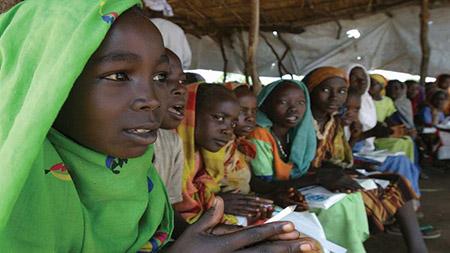
Yet progress towards Sustainable Development Goal 4 — ensuring inclusive and equitable quality education and promote lifelong learning opportunities for all — is in danger of stalling, due to a lack of gender equality in education and persistent barriers that prevent many young girls in developing economies — including my own Mozambique — from remaining in education, devex.com reported.
Gender inequalities around the world are manifested in many aspects of education, including access, retention, and career choices. Female teachers provide an important solution to ensuring equal access to learning opportunities for both girls and boys.
They can disseminate a culture of gender balance through education — not just in the classrooms but in local communities.
However, countries such as my own have a problem. We are struggling to recruit and retain these women and addressing this must become a priority if any meaningful progress is to be made.
According to UNESCO, almost all girls in Mozambique enroll in primary school. Yet more than half drop out by the last grade of primary school, only 38 percent of girls start secondary school, and just 21 percent continue on to college.
The Mozambican government has rightly recognized the critical role of education in poverty alleviation and development, which now accounts for roughly seven percent of GDP spending, higher than most neighboring countries. Primary education has been free for everyone for some years and the government is taking visible action to address nation-wide education challenges — yet the gender imbalance figures are still worrying.
Poverty and access to education remain fundamental drivers of this situation, yet the biggest obstacle is one that cannot be solved by high-level donor pledges and policies alone.
It is the cultural barriers to girls education which help maintain the status quo, people are still reluctant to send their daughters to the schools.
These cultural barriers are exacerbated by circumstance. A family that does not prioritize a girls’ education may still send her to school if the school is close by, it’s safe for her, and not costly. However, when you add safety, distance, indirect costs and lack of bathrooms — then it is likely that the girl child will not receive an education.
This makes her more likely to marry early and in some cases, the girl can be forced into a child marriage. Mozambique still has one of the highest rates of child marriage in the world — with an estimated 48 percent of women aged 20-24 reporting they were married before reaching 18, and according to UNICEF, 14 percent before they turned 15 years-of-age.
Female teachers have the potential to transform this situation.
It is clear that there is a direct correlation between female teachers and retention of girls in school from secondary level upwards.
They act as positive role models for girls; and the parents I speak to have told me they have more confidence to send their children to school if they know teachers are female. It is us who can help create a safe environment.
Additionally, we are better placed to go out into the communities and reassure parents that their girls are safe in school and better off educated.
I know from experience that it is one thing to say child marriage is wrong — but explaining why it is wrong is something that happens far too little and is far more effective. If we are able to reassure the families only then can accompanying policies and funding have a real impact.
Despite the clear benefits female teachers have in improving overall gender equity — retention rates of female teachers remain low across Mozambique and indeed Southern Africa more widely.
Women are underrepresented in higher levels of education, particularly leadership positions, with female headteachers above primary school level in Mozambique still a rarity.
In many countries, the system is rigged against women. Headteacher positions are often not assigned on qualifications but on the influence the person may have in the community or among local authorities — meaning the odds are often stacked against us.
More generally, the school environment, particularly in rural areas, can be intimidating, and even dangerous for girls and women. Male teachers often assume that their opinions are more valid and isolate women from discussions, this exclusion is worsened by the absence of staff rooms and female spaces.
Girls and female teachers face high levels of harassment and violence in and around schools. School-related violence ranges from dangers on the journey to school and harassment by students — with concerns for female teachers’ safety a leading cause of absenteeism or dropping out altogether.
If a female teacher finds a school environment they are happy with — they risk being re-assigned to other, often unfamiliar schools to fill gaps. This causes many female teachers to fall away from the profession.
Coupled with the more general challenges faced by female teachers globally — recruitment, training, remuneration, and career advancement, the task of attracting females to the profession in Mozambique may at times seem insurmountable.
However, through improved policies at a government level, greater funding for salaries and improved working conditions — we can begin to encourage more women into this profession and most importantly, retain them.
*Concerção da Glória Sozinho has nearly two decades’ experience in Mozambique’s education sector, including in primary, secondary, and teacher training schools.
